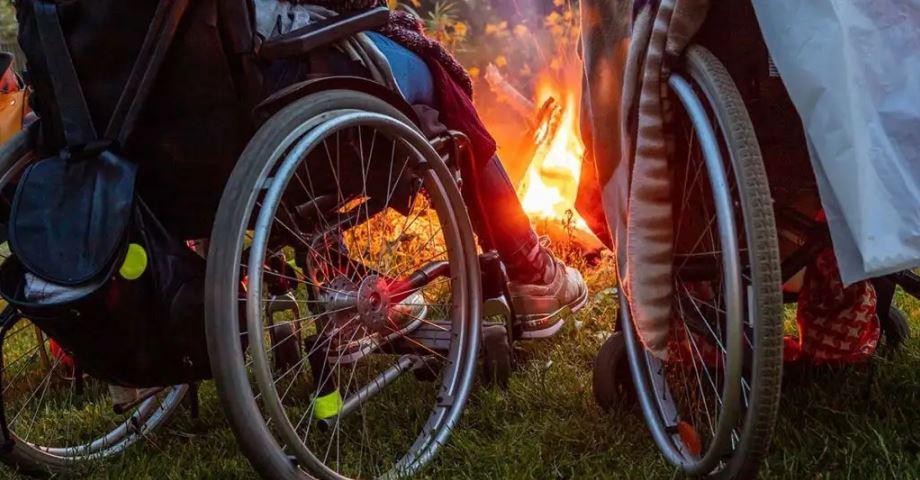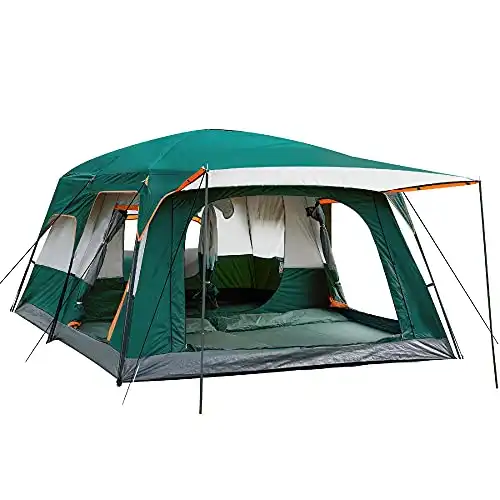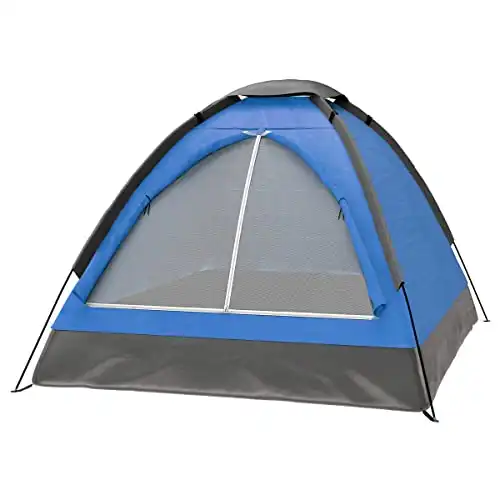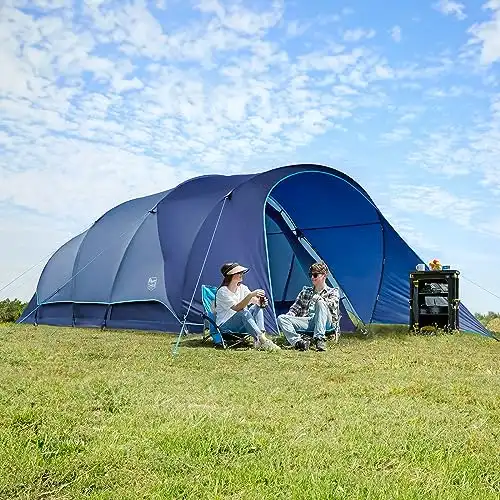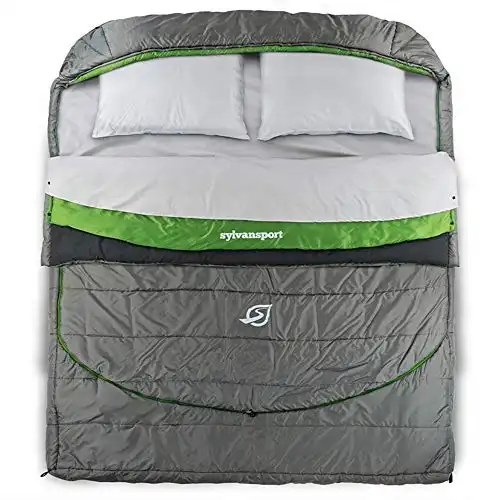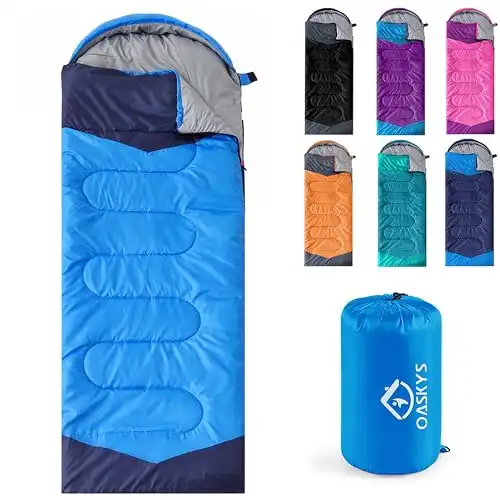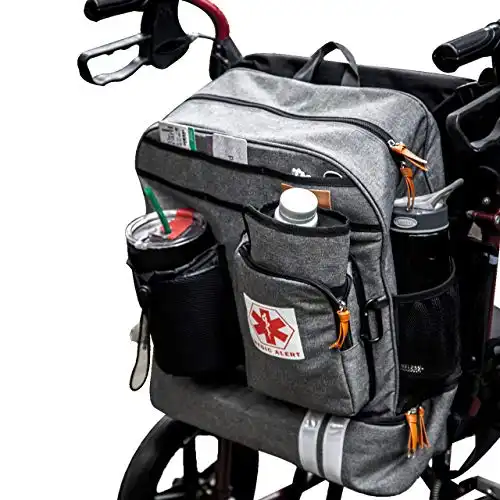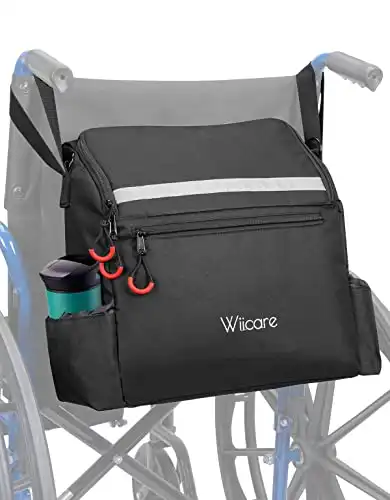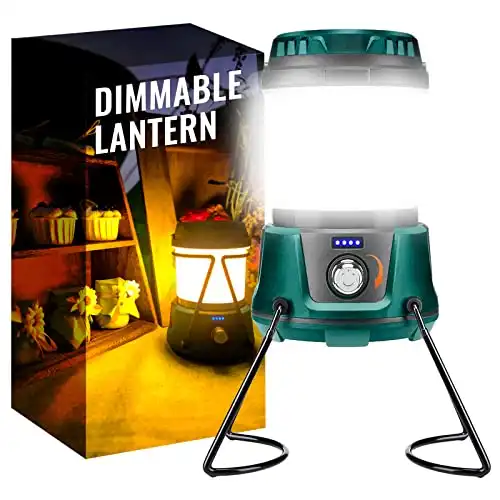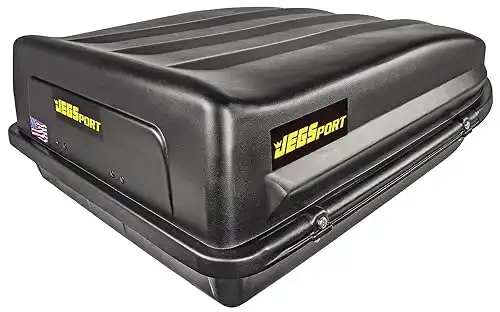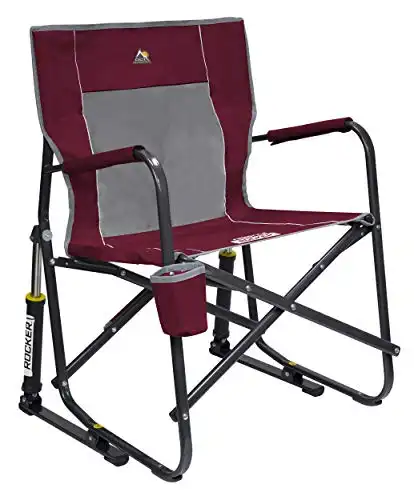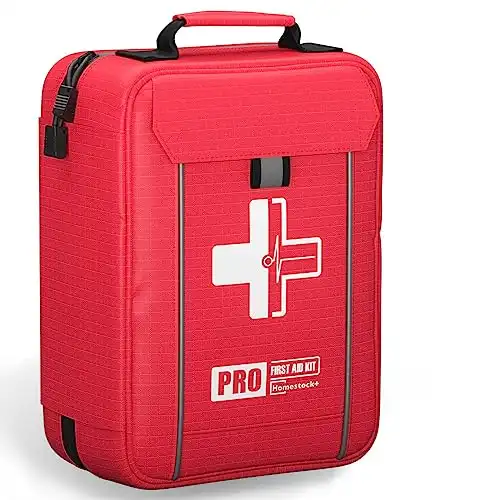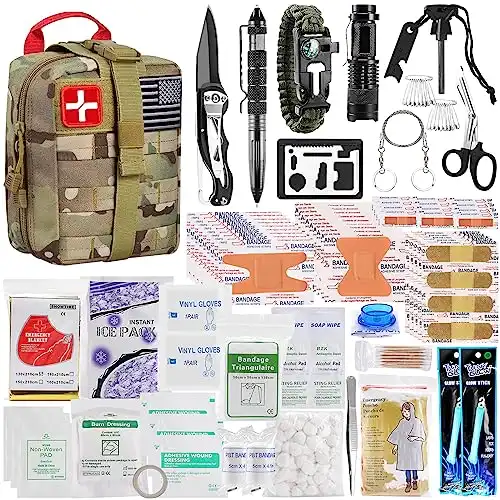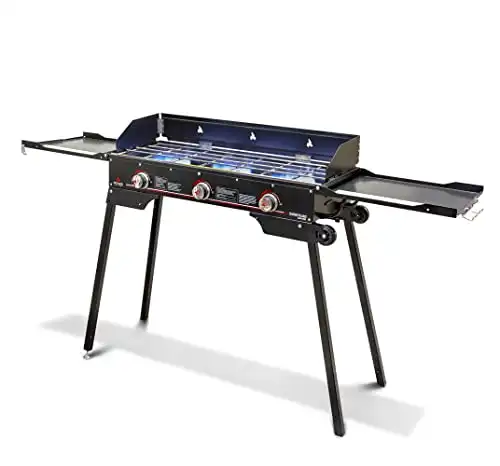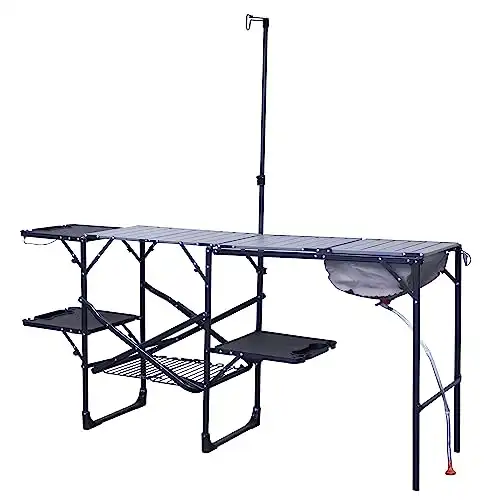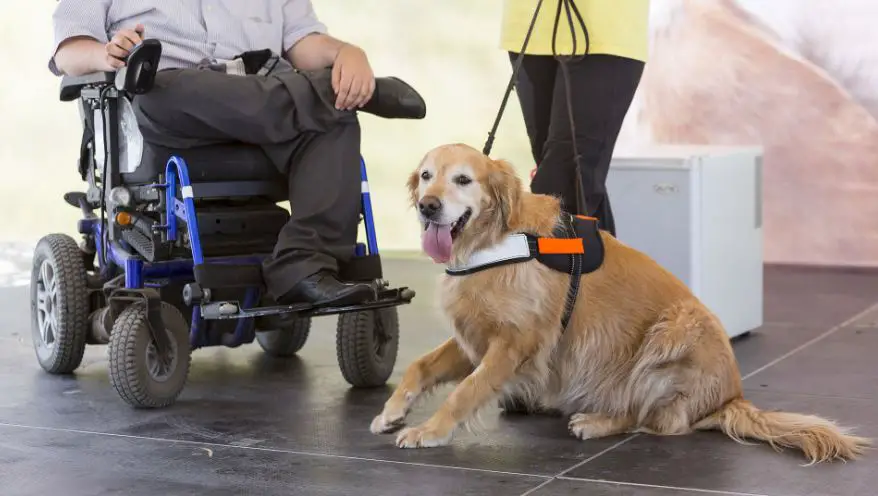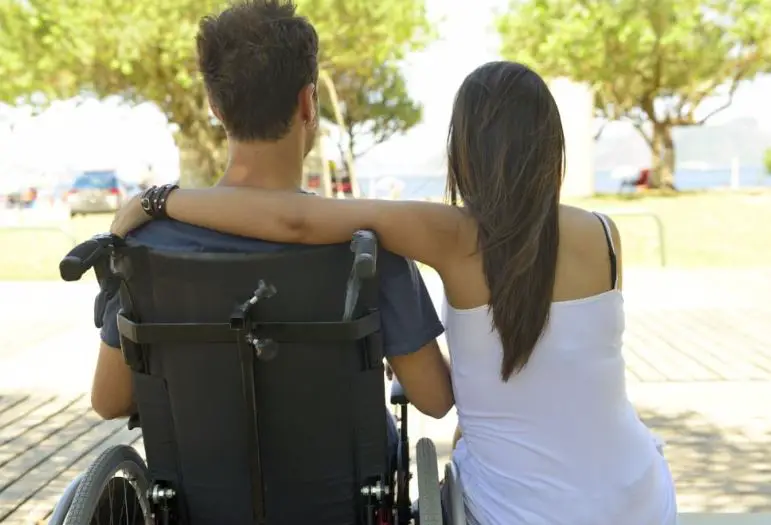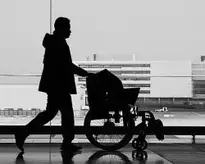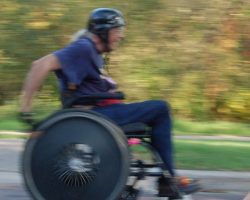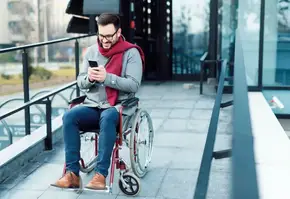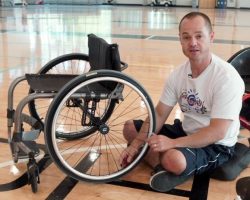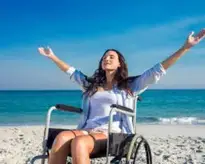This post may contains affiliate links.
This means I will make a commission at no extra cost to you should you click through and make a purchase.
Camping can be an excellent way for people with disabilities to experience the outdoors, and wheelchair camping is one of the best ways for wheelchair users to experience outdoor life.
Can Wheelchair Users Go Camping?
Wheelchair users can go camping. There are a lot of accessible campsites and all-terrain wheelchairs that can accommodate any wheelchair user planning a camping trip.
If you don’t have an all-terrain wheelchair or can’t find a wheelchair-accessible campsite near you, you can rent an accessible RV to camp wherever you want.
In this guide, we’re going to walk you through everything you need to know to prepare for a successful camping trip as a wheelchair user.
Recommended Camping Gear For Wheelchair Campers
Before setting out on an adventure, make sure you are correctly prepared [physically and mentally].
Finding the best outdoor gear for a camping trip in a wheelchair can be a bit overwhelming as there are hundreds of options available. Not to mention that some of these items are made for specific activities while others are better suited for general use.
Here’s a list of items that might come in handy when going on a camping trip in your wheelchair.
Recommended Camping Gear For Disabled Campers
1. Tents
2. Sleeping Bag
3. Camping Backpack
4. Camping Lanterns
5. Car Storage
6. Camping Chair
7. First Aid Kit
8. Camping Stove
9. Camp Kitchen
If you are using a wheelchair and plan to spend a lot of time outdoors, you may need to find a comfortable and practical outdoor wheelchair for your mobility needs.
Using a wheelchair for a camping trip is not an uncommon thing that most people would think about. However, if you are in a wheelchair and interested in going on an adventure, here are some tips that will prepare you for your trip.
How To Go Camping In A Wheelchair
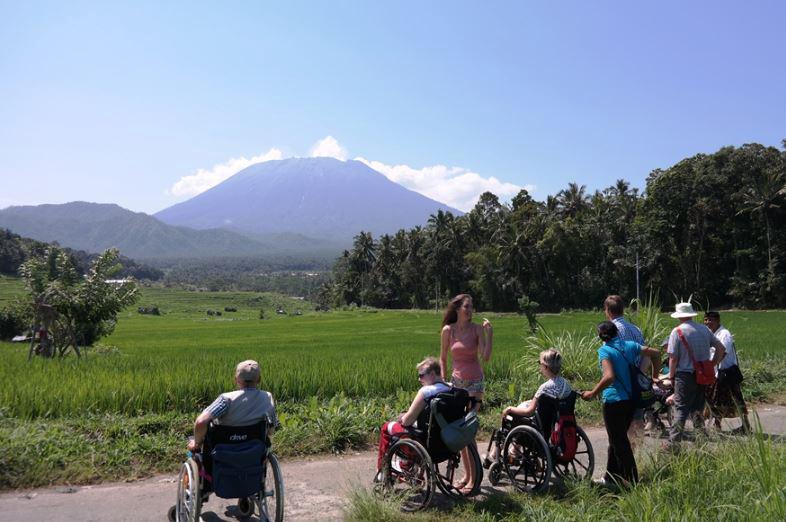
Once you go camping in a wheelchair, you will realize how it is fun and rewarding. The only thing is that planning the whole trip becomes a bit of a struggle as compared to those people who can walk around and move freely. But with some handy tips and tricks, you can make sure that you do not fail with your trip.
In this section of our guide, we’ll share everything you must do before you decide to go camping from your wheelchair. Here are some tips that would prepare you for a camping trip in a wheelchair.
1. Prep Your wheelchair
It’s a good idea to have your wheelchair ready before you go camping so that you can be as independent as possible. Before packing for a camping expenditure, the first thing you need to do is to prepare your wheelchair for the trip.
Your wheelchair is designed for indoor use, so you must take some time to prep your wheelchair for a camping trip before you make a reservation or hit the road.
There are many reasons why you should prepare your wheelchair for a camping trip. One of the reasons is because it may not be able to fit in the car and then you will not be able to go on your camping trip.
If you decide to rent a camper, RV, or Campervan, your wheelchair may be wider than the walkway, and you will have trouble moving because of the small spaces.
You should double-check to ensure that your wheelchair is in good working condition before you go on your trip.
So, how do you prepare your wheelchair for a camping trip? Here are some wheelchair accessible camping tips (from an actual camper):
- Make sure it’s clean. You don’t want to bring something that isn’t sanitary into the wilderness! It will definitely attract wild animals and pesky insects.
- Pack it up with all of its necessary gear (such as a battery pack if needed).
- If your wheelchair isn’t made of water-proof materials, consider getting a canopy to protect it from the sun and rain.
- Make sure that it doesn’t take up too much space in the car or on your campsite.
- Bring extra straps or bungees if you are using a van or camper.
- Make sure your wheelchair is in good working condition and suitable for outdoor use. If you use an indoor or lightweight wheelchair, you can modify it for outdoor use.
2. Find A Good Camp Site
If you have a disability, find out if there are any accessible campsites nearby. It is best to book well in advance, so you have time to find a place which is not too small or too large.
If your campsite has electricity, running water, or other facilities that would make your experience more memorable and comfortable, then you should pack your bags and head there.
You prefer to camp in the open with your friends, you should camp in an area that’s flat and not too rocky. You may want to try out a few different spots before deciding which one you want to camp at for the night.
Things to take into consideration include the type of terrain, distance, and camping style. Camping trips can range from one night to five days or more, depending on the kind of trip.
It is crucial to make sure that the chair will handle all of these requirements and any other special needs you may have, such as electricity or running water nearby.
Campgrounds are required by law to provide handicap-accessible restrooms and parking spaces for disabled campers.
The majority of campgrounds have some sort of gravel path that leads to the campsite. If you have a lightweight wheelchair with large balloon tires, it will be easier to get around these trails. However, if you have a larger chair that weighs more than 70 pounds or has smaller tires, then you may need assistance getting over the rough terrain.
You can spot a wheelchair-accessible campsite near you by doing a simple google search. For example, you can search for something like “Handicap-Accessible Camp Sites Near Me” or “Accessible Camp Sites Near Me.”
We’ve already compiled a list of the most popular wheelchair-accessible hiking trails and campsites in the United States. You should check out that guide if you can find an accessible trail near you.
Once you find a spot and bookmark it. Once you’re on-site, find a good location, set your brakes on your chair, put up your tent, go inside, and sleep just like any other camper!
3. Ask About Accessible Areas
One of the most challenging aspects of camping in a wheelchair is figuring out which sites are accessible.
The first step is to ask about the accessible areas. You should ask or Google questions like:
- Are there stairs?
- Can you get down from the highest point?
- Are there areas with rock steps?
- Is there a lot of narrow walkways or alleys?
Wheelchair camping is a great way to get out of the house and enjoy nature. But not all campsites have ADA accommodations, so make sure your camp has accessible spaces.
Many national parks and other wilderness areas do not have any accessible campsites. Sometimes, a local resource may be the only place for access.
Accessible areas for camping in a wheelchair are hard to find, but some parks and campsites have accessible trails and areas. It is essential to have these accessible campsites because they provide more opportunities for people with disabilities to enjoy outdoor activities.
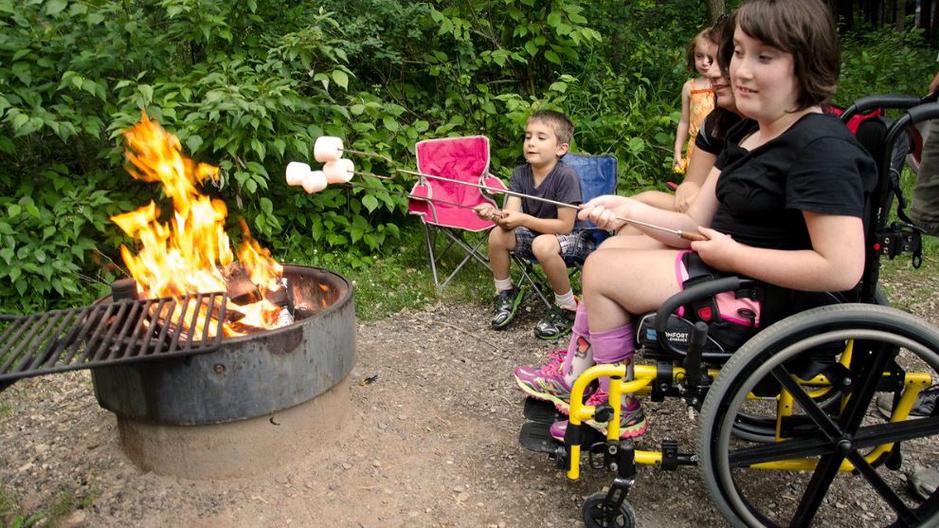
Make sure you have enough space at your campsite, as well as an accessible bathroom.
How do I identify an accessible campsite?
The wheelchair accessible campsites, hikes, and trails have wheelchair-friendly layouts and facilities like:
- Curbing at the entrance to the site with 4” lip to allow easier access.
- Ramps on raised platforms.
- Bathrooms with handrails.
- Handicap parking spaces.
- Nearby access points to trails.
Make sure to ask about different areas before you go.
You can be turned away from a great experience if you aren’t prepared with enough information about your destination. If the site is accessible, be sure to contact the campground directly to inform them of your needs so they can make the best possible experience for you.
4. Consider Renting An RV Or Van With A Ramp
If you are camping with a couple of friends, then you guys should consider renting a wheelchair-accessible van or RV.
RVs are a great way to travel the country, and they provide more space than hotel rooms. Consider renting an RV fully equipped with emergency gears like a flashlight, extra batteries, matches, fire extinguisher, first aid kit, whistle for emergencies, or even a foldable shovel for digging out of snow or mud if you get stuck in your vehicle.
You can outfit your RV (or van) with various amenities to make it perfect for your camping trip; the key is deciding what you will do once you arrive at your destination and if it will make you feel comfortable there.
The first consideration is the size of your camper and how many people will be traveling in it. For example, if you are going to stay near the campgrounds, you may only need a trailer that sleeps two people with a kitchenette, but if you’re going to be off the beaten path, you’ll want a more rugged camper that can sleep up to six people.
Prepare and carry the right equipment for your mobility needs and know how to get there in one piece.
Create a checklist, and it will give you a sure guideline of the type of camper you’ll need for your trip.
5. Hit The Road
Nothing can prepare you for the fantastic experience of hiking in nature. You always encounter the unexpected, no matter how prepared you are.
Once you’ve completed all the steps above, the next best thing to do is finally get this show on the road. Load your wheelchair in a car roof box or the trunk of your car.
Wheelchairs can be a little tricky to get into a car. The best way to load one is to tip it on its side, then slide the rear wheels into the trunk, then lower it into place. Sort of like loading a big suitcase.
Camping is a great way to experience the outdoors and get away from everyday life. So, head to your chosen campsite and enjoy the experience of a lifetime.
The key to camping in a wheelchair is planning. Ask questions when you make your reservation. The campground will be glad to help you figure out what they have available for people in wheelchairs. If you are looking at an area with two or more campgrounds, make sure they know which one you will be using; otherwise, they may give you conflicting information.
Camping in a wheelchair can be difficult in some campsites because of steep inclines and soft ground. Look for sites on level ground and avoid sites with a lot of tree roots or large rocks under them. Some campgrounds have concrete pads for easy access to the tent site.
These are usually reserved for people with disabilities or elderly visitors, so if you have trouble getting up from a low seat, ask the staff if there are any special sites available.
A good camping trip will make you feel like you have reached a new level in your outdoor experiences. No longer will you be able to say that you only go camping on weekends. Instead, sitting around a campfire with a bottle of beer and a lantern can feel like the perfect way to spend time outdoors.
There you have it. This is a complete guide to planning a camping trip and a list of gear you need to have a successful camping expenditure in a wheelchair.

